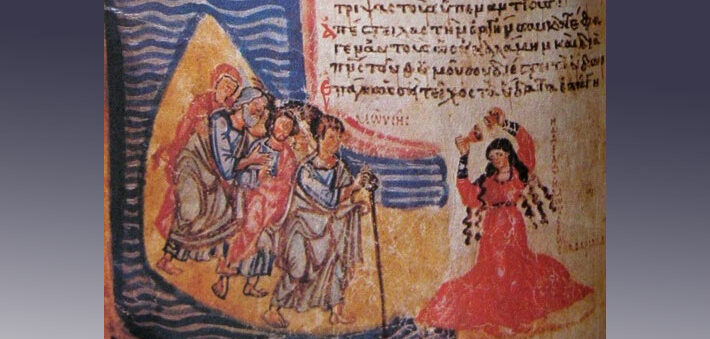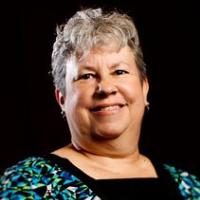Commentary on Ezekiel 37:1-14
In this well-known passage from the book of Ezekiel, the prophet speaks over a field littered with dry bones, and the dead are resurrected.
The passage lingers over the details: the bones rattle as they align themselves, stitched together with tendons, dressed with muscle, and finally draped with skin. Wrapped in wind, they come to life.
When this text is read in the context of the Easter season, it functions as a foreshadowing of the final bodily resurrection proclaimed as a tenet of faith in the Apostles’ Creed. Within the context of the book of Ezekiel, however, it is a metaphor for the restoration of a nation devastated by war. The bones are those of warriors felled on the battlefield, denied a proper burial, their corpses desecrated by carnivorous animals. This is not a reference to a specific battle. Instead, the prophetic text paints a metaphor for what the Exile felt like to the survivors: they are as good as dead, with all hope lost. They are lifeless and impotent, desecrated and devoured.
It is against this dire backdrop that the text’s narrative functions as a tableau of irrational hope. To be sure, many prophetic books have passages that promise restoration, especially the rich poems of Isaiah 40-55, but what makes this passage so distinctive is the way that it combines a surreal landscape with realistic detail. Ezekiel’s fantasy field feels uniquely tangible and oddly earthy. These details portray restoration not as the result of a sweep of God’s magic wand, but rather as a sequential process where God attends to each step. Bones without sinew would not stand, and muscles without skin would remain vulnerable. God does not just recreate them, but recreates them as messy, complex human bodies. And such a picture connotes the intentionality of our human bodies, which we may at times despair over because they leave us too at risk, but about which God says, I have made them so.
The restoration is a communal one. On the one hand, this is not surprising given the fact that ancient Israelites had a very collective perspective, especially in contrast to our modern individualistic society, but this communal perspective is not just accidental. It forms part of the essential message of this passage. God does not command Ezekiel to resurrect only the heroes, those who had been brave in battle or who had sacrificed themselves to save another. All of the bones come back to life, the bones of those who were not very good with a sword, those of the armor-bearers and servants, those who had tried to desert the battlefield and those who tried to save only themselves, those who begged for mercy and perhaps even those who tried to join the winning side. It does not matter. If there will be a resurrection for Judah, it will be for everyone. The new Judah will not be a society of super-heroes. It will be the same Judah as before, with their vulnerable bodies and their array of human foibles. All of this is worth God’s effort.
The audience experiences this scene through their avatar, Ezekiel, which places a different spin on the material. As audience member, I do not identify with the bones. I do not walk away from the text with a new perspective on what it would feel like to have my scattered bones gathered together and be whisked back into earthly existence. Instead, I identify with this prophet, who reveals a tender moment of existential self-doubt. The passage begins with him (and his audience) dragged onto this virtual field. It is one of only three times in the book that the prophet is literally “brought by God” to a site in order to pronounce or witness something momentous. The first is in chapters 8-11 where the prophet is brought to Jerusalem to witness the sinfulness of the Jerusalemites that causes God to leave the temple. (In chapter 1 he merely has a vision of this temple and is not transported to the site.) The third instance is in his temple tour of chapters 40-48, again connoting a kind of bodily experience of a virtual space. By using the same verb here, the compiler of the book signals this vision as more than mere metaphor. It depicts the virtual reality that is usually invisible to human eyes.
God asks the prophet if the bones can come alive, to which he feebly answers, “Only you know that.” But what God knows is something even more startling. God knows that it is Ezekiel who will bring the bones to life. The text states that he “prophesies” but it does not record what that involves. Does the prophet intone a chant like a would-be Harry Potter? Does he command the bones to move, the wind to come? Does he lie on the bones, foreshadowing Jesus? Obviously it does not matter. What only matters is that God uses this human, doubting prophet to accomplish this amazing feat.
If Ezekiel is our avatar, what does that mean for us as readers of the book? While I admit that there are times when I want to identify with the dry bones, I have to confess that the passage wants me to take responsibility. It is my job to bring hope to hopeless situations, and pour life onto dry fields. It may often seem like an impossible task, but God chooses us to work the magic, even in our own frail, embodied, and unheroic state. That is the true Easter message.


March 26, 2016